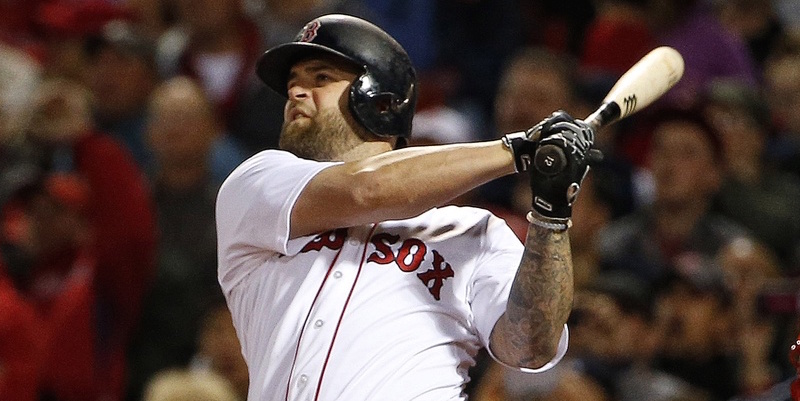With the Red Sox losing in increasingly disappointing ways over the last couple weeks, the team has cemented its status at the trade deadline today as a seller. For the second straight year, the Red Sox will look to deal players by the trade deadline, but unlike in 2014, the Red Sox don’t have major-league assets that are worth a lot on the market. While Jon Lester and Andrew Miller brought back valuable players, the closest thing the Sox have to either of those two players in value is Koji Uehara.
In terms of selling, the situation for the Red Sox is dire. This team was built to win, and had the prospects and money to afford top-tier starters when the deadline came calling. Since the whole winning thing isn’t happening, Ben Cherington’s best course of action is see who has interest in any one of the guys whose contracts are up at the end of the season. Unfortunately, most of them are scuffling. His hands are effectively tied.
But what if the Red Sox decided to become buyers anyway? Obviously they wouldn’t go for rentals, but what if the Sox looked for players who will still be under contract for the next season or longer? This line of thinking isn’t too outlandish when you look at the resources the organization still has.
Their impressive collection of prospects is still intact. Guys like Deven Marrero and Garin Cecchini are effectively blocked at the major league level, and the Red Sox have no reason to start them over the players blocking them. There are even guys deeper in the system, like Carlos Asuaje, who are likely to be beaten out by better, younger players at the same position, such as Yoan Moncada. The trade chips are there.
They’ll have some money to work with after the season ends. Contracts will expire – most notably Mike Napoli’s, if he’s not traded – and who knows if the front office will try to trade a big contract for salary relief. B-Ref projects Boston’s salary in 2016 for just under $160 million, and that includes all potential contract options being picked up – which is essentially $23 million for another year of Buchholz and Ortiz. You could fit an entire big contract in the gap between that and the luxury tax threshold, should the Sox care to stay under it.
Having taken inventory on Boston’s resources, the discussion comes down to potential targets. Two young pitchers who should get more attention than they do are Tyson Ross of the Padres and the Braves’ Julio Teheran.
Ross isn’t even eligible for arbitration until 2016, and the Padres have been listening to overtures concerning his availability. While he boasts a 3.45 ERA, Ross has been rolling with a 2.75 FIP despite a high opposing BABIP and a BB/9 in the fours. I don’t know about you, but any pitcher who can strike out nine or more per 9 IP with a ground ball rate over 55% gets me salivating.
Teheran doesn’t exactly seem like a big candidate to be traded, but the Braves are acting like he’s still available. He’s had a rough year so far, but apart from his most recent start against the Orioles, he’s looked much better in July. Teheran’s contract isn’t even his rookie deal anymore – the Braves signed him to a six-year, $32 million contract. That means no arbitration, and the most expensive he’ll be is $11 million in 2019. Young, relatively inexpensive pitchers are usually worth a gamble.
The Red Sox don’t have to sit on their hands and wait for someone to offer a bucket of Dubble Bubble for either Napoli or Alejandro De Aza.
Sure, there are other options out there, like Carlos Carrasco and even Aroldis Chapman. However, the point is that there are options. The Red Sox don’t have to sit on their hands and wait for someone to offer a bucket of Dubble Bubble for either Napoli or Alejandro De Aza. They can go both ways. Cherington can rid the team of expiring contracts while still reeling in a pitcher who is under contract for 2016 or longer. It’ll be a step in the right direction, and could jump-start the offseason retooling period that is expected to happen.
The Rangers just presented a good example of this. Their acquisition of Cole Hamels wasn’t solely for 2015 – it was so they could pair him with Yu Darvish and have a killer starting pitcher duo in 2016. Texas can still sell as well, since Yovani Gallardo seems like a prime candidate to be shipped off to a team such as the Giants. The Red Sox can do this. It’s not unheard of. This type of management at the deadline isn’t crazy.
The trade of Shane Victorino was a good first step. While Josh Rutledge shouldn’t be the answer to anything except “Who did the Red Sox get back in that trade?” it gave Rusney Castillo two months to get acclimated to the majors. Now’s the time when the hard choices have to be made. The Red Sox have until this afternoon to decide whether to try and get a pitcher they desire, or be content with only selling what little they have. They have the ability and the resources to get what they need for 2016 now. The Red Sox have everything to gain from buying and selling at the same time.
Photo by Winslow Towson/USA Today Sports Images
